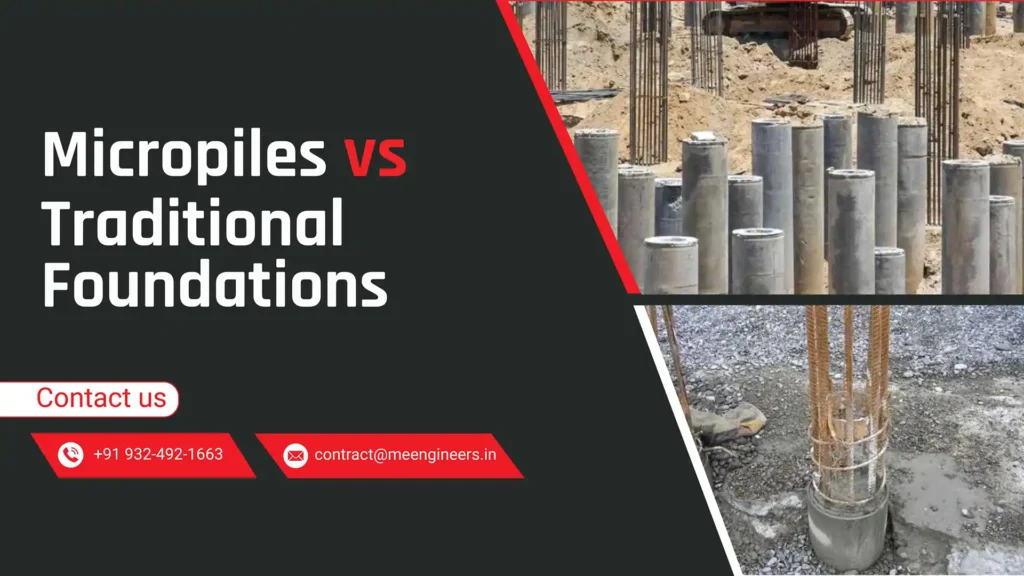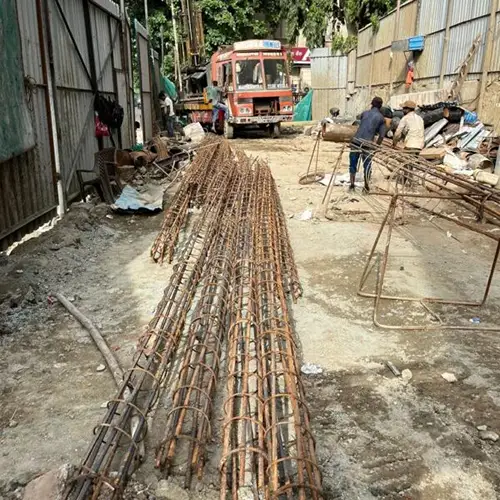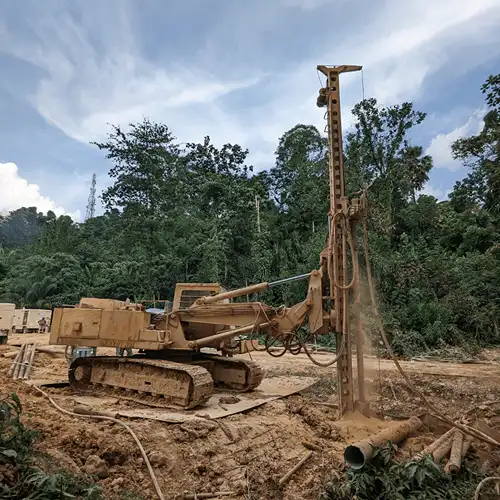
Micropiles vs. Traditional Foundations - When and Why to Choose Each
Imagine you want to build a house, tower, bridge, or any heavy structure. To make sure it stands strong and doesn’t sink or tilt over time, you need a solid foundation under it. But not all foundations are the same. Sometimes, the ground is soft, uneven, or difficult to access, so the “usual” foundation methods may not work well. That’s when special techniques like micropiles come in.
In this guide, we’ll explore:
- What micropiles are, and what “traditional foundations” means
- The pros and cons of each
- When you should choose micropiles vs. when a traditional foundation is enough
- FAQs and common “why” questions
- How ME Engineers can help you choose and implement the right foundation
Let’s begin.
What Are “Traditional Foundations”?

When people say “traditional foundations,” they usually refer to shallow or deep foundations built using conventional methods:
- Shallow foundations — such as spread footings (concrete pads under columns), strip footings (continuous strips under walls), or slab-on-grade (a thick concrete slab under the entire building). These are used when the ground near the surface is strong enough to support the load.
- Conventional deep foundations — such as driven piles (steel/ precast concrete piles hammered into the ground), bored piles / drilled shafts (holes drilled and then filled with concrete and reinforcement), caissons, etc.
These foundation types have been used for decades. They are well-understood, widely accepted, and often cheaper or simpler when soil and site conditions are favorable.
What Are Micropiles?
Micropiles (also called mini-piles, pin piles, or root piles) are small-diameter, high-capacity piles drilled into the ground and reinforced with steel, then grouted.
Key features:
- Diameter is usually small — less than 300 mm (≈12 inches) in many cases.
- They rely heavily on bond (friction) between the grout and soil along their length, but sometimes also get support from an end bearing (if they reach a strong rock layer).
- They are reinforced by steel bars, steel casings, or hollow bars.
- They are installed by drilling, then grouting (sometimes pressure grouting) into the hole, often with special techniques to ensure full grout contact.
- Because of their small size, they can be used in places where large equipment cannot reach, or where disturbance (vibration, excavation) must be minimal.
Micropiles were originally developed in the mid-20th century and gained greater adoption since the 1980s.
Compare - Micropiles vs Traditional Foundations
Below is a side-by-side comparison to help you understand strengths, limits, and trade-offs.
|
Feature / Factor |
Traditional Foundations |
Micropiles |
|
Cost |
Often less expensive per meter and simpler materials, when soil is good |
Usually more expensive per meter, because of reinforcement, drilling, grouting |
|
Excavation & Disruption |
May require large excavation, removal of soil, disturbance to surroundings |
Minimal excavation, less soil removal, less disturbance and vibration |
|
Equipment & Accessibility |
Heavy machinery, large rigs, space and access needed |
Smaller rigs, fit into tighter spaces, useful for restricted access |
|
Load Capacity |
Good when soil near the surface is strong, or when using large piles |
Very good in challenging soils; can reach deeper competent layers; able to resist uplift and lateral loads |
|
Settlement Risk |
If ground is weak, it may settle or shift |
Better in weak soils because micropiles are anchored deeper and rely on bond |
|
Speed of Construction |
In some cases slower (due to large excavation, formwork, curing) |
Can be faster in difficult ground because less excavation and sometimes faster grouting techniques |
|
Vibration & Nearby Structures |
Piling or heavy techniques may cause vibration affecting nearby buildings |
Micropiles produce lower vibration, safer near sensitive structures |
|
Flexibility in geometry |
Works well in “normal” sites |
Can be angled (“battered”) piles, placed close to existing structures, steeper slopes, etc. |
|
Maintenance & Durability |
Durable if designed well, but potential cracking, settlement etc. |
Very durable, robust — often used in retrofit and repair jobs |
When to Choose Micropiles — Use Cases & Indicators
You should seriously consider micropiles in these scenarios:
- Poor or unpredictable soil near the surface If topsoil is weak, soft clay, loose fill, or erratic in strength, traditional shallow foundations may fail or settle. Micropiles can go deeper, anchoring into more competent strata.
- Restricted access or tight space When you can’t bring in big cranes or excavators — e.g. inside city blocks, between existing buildings, on narrow plots, or over an existing structure — micropiles work.
- Low disturbance / minimal vibration requirement If nearby buildings, old structures, or utilities must not be disturbed, micropiles cause lower vibration and less noise.
- Retrofit, underpinning, or strengthening existing foundations When an old building is settling, cracking, or you wish to add extra loads (extra floors), micropiles can strengthen without demolishing. Underpinning using micropiles is a common method.
- Steep slopes, hillside sites, or uneven terrain Micropiles can be installed at angles and in difficult topography.
- Seismic or lateral load demands Where lateral forces (wind, earthquake) matter, micropiles can be arranged and designed to resist bending and lateral forces.
- When a traditional foundation is infeasible or too disruptive If excavation is dangerous, unstable, or too costly (e.g. in sensitive environmental areas), micropiles might be the practical option.
- Time-sensitive projects In difficult soil, micropiles sometimes save time because you skip heavy excavation and lengthy curing cycles.
So: micropiles shine in challenging, constrained, or retrofit situations.
When a Traditional Foundation Is Better
There are many cases where a traditional foundation is sufficient, or even preferable:
- The soil near the surface is strong and uniform, so a spread footing or slab works well
- The loads are moderate and predictable
- You have plenty of space and access for excavation and machinery
- The project budget is tight, and you want the lowest cost method
- The construction timeline is not very short (you can afford extra time for excavation, formwork, curing)
- No difficult geometry or nearby structures to protect
- You don’t need extreme lateral/ seismic performance
In those cases, traditional foundations are simpler, well-understood, and cost-effective.

How ME Engineers Can Help You (Promoting Your Service)
At ME Engineers, we specialize in foundation design, analysis, and construction consulting. On our foundation / deep foundations you can see how we offer:
- Geotechnical investigation and soil testing
- Foundation system selection (micropile, conventional piles, shallow foundations)
- Structural design of foundation elements
- Construction supervision and quality control
- Retrofit and underpinning services
When you hire us:
- We begin with a geotechnical site investigation (soil samples, drilling logs, lab tests)
- We analyze loads (dead load, live load, wind, seismic) and match them to soil conditions
- We propose foundation options, cost estimates, pros/cons
- Once you select, we produce detailed drawings, specifications, and calculation notes
- We assist during construction — ensuring correct drilling, grouting, reinforcement, and testing
Because we understand both micropiles and traditional foundations, we can guide you to the most efficient, safe, and cost-effective solution for your specific project.
You can (on your site) provide a link: “Learn more about our Foundation / Deep Foundations services” and refer readers to your case studies, past projects, and contact forms.